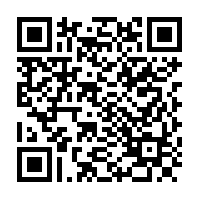Gerry Griffin tells the community why mobile could be the solution to a successful lifelong learning strategy.
The demands of today’s ever-changing workplace have led to a growing focus on continuous and self-motivated learning. Technology can enable staff to happily and readily pick up new knowledge and skills. The first half of this article looks at how and why technology is so well placed to be the key to open the door to lifelong learning. The second half examines how people management professionals can use technology to foster such a learning culture.
Mind the gap
First, with traditional training, there is a gap in time and space between when you learned and where/when you applied that learning. When you sit at a PC looking at a dull elearning module or sit through some chalk and talk about change management, there is an inevitable 'gap' between where/when you acquire this information and where/when you deploy it.
Through this gap, a lot of valuable knowledge and skills escape. This information isn’t new. Back in 1885, German Psychologist Hermann Ebbinghaus introduced his now famous ‘Forgetting Curve’. This contended that up to 90% of content learned is very quickly forgotten. However, what is new is the average executive now possesses a device capable of supporting their business performance. By furnishing learners with constant and immediate access to relevant material, the users themselves are capable of refreshing content acquired at any point in the past. As a result, there is no expiration date for learning modules. The learner simply chooses when they want/need to access content.
Many employees are no longer geographically bound, both a major challenge and opportunity in today’s workplace. The rise of the knowledge worker also enables each to take responsibility for completing their roles without strict supervision. Employees are now demanding a learning culture which reflects this change. Mobile devices and cloud computing are both technological capabilities which can support a disposition to lifelong learning. For example, mobile devices allow staff to search and retrieve material to use when situations and challenges arise. Mobile and the cloud also encourage collaboration as employees share interesting material, a TED talk for example, among their colleague group.
Self-service learning
Now let’s look at how people management professionals can harness the power of technology to enable and promote lifelong learning.
In order to prepare learners/employees for lifelong learning, people management professionals must provide their people with opportunities to develop their self-learning capacity and overall disposition to learning.
Encourage collaboration
Let’s start with the result. Successful 21st century learning needs to be personal, useful and easy to access. Elearning up until this point has mostly been sterile, prescriptive and more concerned with compliance and tracking than actual utility.
When defining a learning challenge, place the user’s needs and perspectives at the centre of your learning plan. Take this one step further and use employee input to develop and improve interventions. For example, make a well-respected member of staff the face of a new programme. Workers are more likely to engage with a colleague delivering relevant advice in a buddy style tone than an anonymous elearning personality.
Furthermore, use employee feedback to assess the effectiveness of learning material. This effectively puts the learner at the centre of the learning cycle – both distributing and benefiting from the content.
Foster autonomy and responsibility
Future learning encourages staff to take responsibility for achieving learning objectives and their own career development. For example, two- to three-minute animated videos work on the logic that the employee him/herself is responsible for accessing and using the material. Viewed via the mobile device, they get a much-needed information boost before an important event e.g. a sales pitch. While it might take some time for both employees and HR to adjust to, it will inevitably lead to a more proactive learner eager to constantly improve and learn.
Implement motivating learning initiatives
Motivated staffers are more likely to become lifelong learners, as they have a passion and desire to learn. It makes sense to implement learning initiatives which will capture the employee’s attention, and ultimately motivate them to learn.
Telecommunications company TalkTalk recently experimented with a creative ‘tagging’ initiative. They populated offices with QR codes and augmented reality (AR) triggers. Employees hover their mobile over the AR- or QR-enabled posters and training material instantly streams via their device. The posters were strategically populated in different areas of the office. For example, a poster in the lift takes the users to content on elevator pitches. This is a prime example of how technology can transform basic learning into a thought-provoking, interesting and enjoyable experience thus making the learner more motivated to learn and re-learn.
Technological advancements such as cloud computing, mobile devices and web 2.0 technologies are still relatively new additions to the workplace. HR should experiment with different ways of using these new tools to help meet lifelong learning goals. Employees are becoming more literate with new technologies and immersed in the participatory culture they represent. This trend offers a massive opportunity to promote lifelong learning in the workplace.
Gerry Griffin is director of Skill Pill M-Learning and a former director of the London Business School and author of six business books. Gerry founded Skill-Pill in 2007, and is passionate about the impact m-learning can have in supporting executives in the workplace

Scan this QR code to access the 'Rewire your learning' Skill-Pill
Gerry Griffin tells the community why mobile could be the solution to a successful lifelong learning strategy.
The demands of today’s ever-changing workplace have led to a growing focus on continuous and self-motivated learning. Technology can enable staff to happily and readily pick up new knowledge and skills. The first half of this article looks at how and why technology is so well placed to be the key to open the door to lifelong learning. The second half examines how people management professionals can use technology to foster such a learning culture.
Mind the gap
First, with traditional training, there is a gap in time and space between when you learned and where/when you applied that learning. When you sit at a PC looking at a dull elearning module or sit through some chalk and talk about change management, there is an inevitable 'gap' between where/when you acquire this information and where/when you deploy it.
Through this gap, a lot of valuable knowledge and skills escape. This information isn’t new. Back in 1885, German Psychologist Hermann Ebbinghaus introduced his now famous ‘Forgetting Curve’. This contended that up to 90% of content learned is very quickly forgotten. However, what is new is the average executive now possesses a device capable of supporting their business performance. By furnishing learners with constant and immediate access to relevant material, the users themselves are capable of refreshing content acquired at any point in the past. As a result, there is no expiration date for learning modules. The learner simply chooses when they want/need to access content.
Many employees are no longer geographically bound, both a major challenge and opportunity in today’s workplace. The rise of the knowledge worker also enables each to take responsibility for completing their roles without strict supervision. Employees are now demanding a learning culture which reflects this change. Mobile devices and cloud computing are both technological capabilities which can support a disposition to lifelong learning. For example, mobile devices allow staff to search and retrieve material to use when situations and challenges arise. Mobile and the cloud also encourage collaboration as employees share interesting material, a TED talk for example, among their colleague group.
Self-service learning
Now let’s look at how people management professionals can harness the power of technology to enable and promote lifelong learning.
In order to prepare learners/employees for lifelong learning, people management professionals must provide their people with opportunities to develop their self-learning capacity and overall disposition to learning.
Encourage collaboration
Let’s start with the result. Successful 21st century learning needs to be personal, useful and easy to access. Elearning up until this point has mostly been sterile, prescriptive and more concerned with compliance and tracking than actual utility.
When defining a learning challenge, place the user’s needs and perspectives at the centre of your learning plan. Take this one step further and use employee input to develop and improve interventions. For example, make a well-respected member of staff the face of a new programme. Workers are more likely to engage with a colleague delivering relevant advice in a buddy style tone than an anonymous elearning personality.
Furthermore, use employee feedback to assess the effectiveness of learning material. This effectively puts the learner at the centre of the learning cycle – both distributing and benefiting from the content.
Foster autonomy and responsibility
Future learning encourages staff to take responsibility for achieving learning objectives and their own career development. For example, two- to three-minute animated videos work on the logic that the employee him/herself is responsible for accessing and using the material. Viewed via the mobile device, they get a much-needed information boost before an important event e.g. a sales pitch. While it might take some time for both employees and HR to adjust to, it will inevitably lead to a more proactive learner eager to constantly improve and learn.
Implement motivating learning initiatives
Motivated staffers are more likely to become lifelong learners, as they have a passion and desire to learn. It makes sense to implement learning initiatives which will capture the employee’s attention, and ultimately motivate them to learn.
Telecommunications company TalkTalk recently experimented with a creative ‘tagging’ initiative. They populated offices with QR codes and augmented reality (AR) triggers. Employees hover their mobile over the AR- or QR-enabled posters and training material instantly streams via their device. The posters were strategically populated in different areas of the office. For example, a poster in the lift takes the users to content on elevator pitches. This is a prime example of how technology can transform basic learning into a thought-provoking, interesting and enjoyable experience thus making the learner more motivated to learn and re-learn.
Technological advancements such as cloud computing, mobile devices and web 2.0 technologies are still relatively new additions to the workplace. HR should experiment with different ways of using these new tools to help meet lifelong learning goals. Employees are becoming more literate with new technologies and immersed in the participatory culture they represent. This trend offers a massive opportunity to promote lifelong learning in the workplace.
Gerry Griffin is director of Skill Pill M-Learning and a former director of the London Business School and author of six business books. Gerry founded Skill-Pill in 2007, and is passionate about the impact m-learning can have in supporting executives in the workplace

Scan this QR code to access the 'Rewire your learning' Skill-Pill




